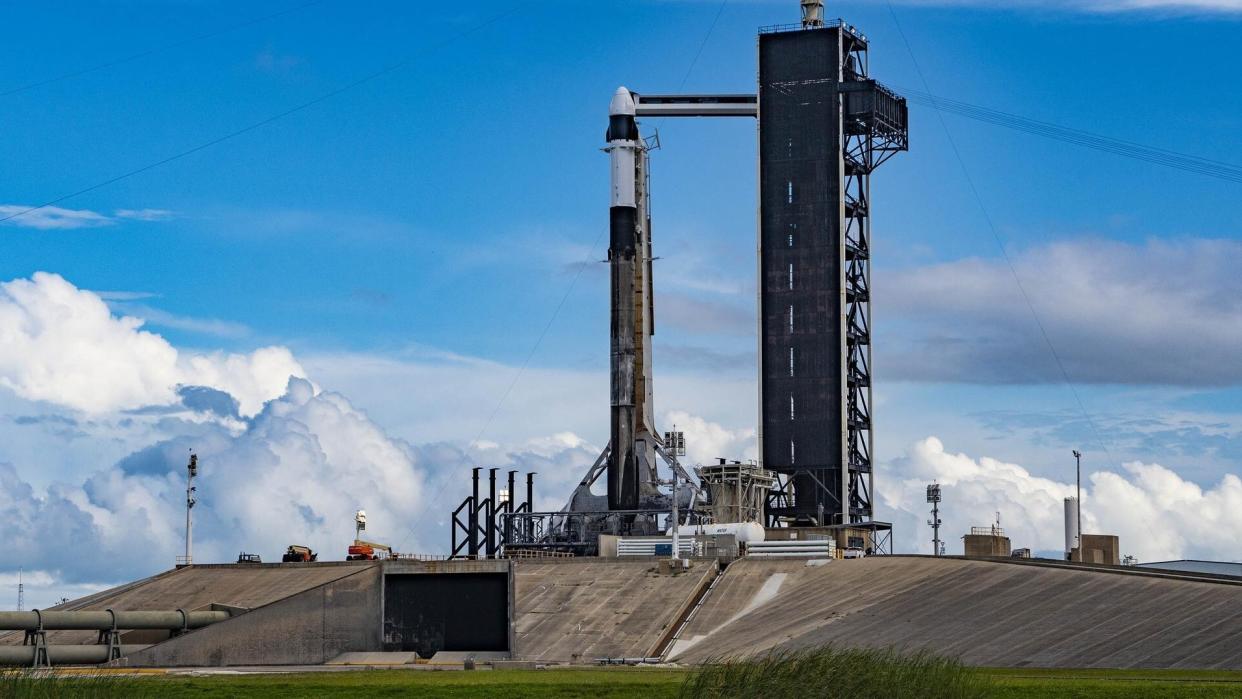SpaceX, NASA delay CRS-29 cargo launch to International Space Station

The next cargo shipment to the International Space Station will wait on Earth two extra days.
NASA and SpaceX have delayed the Cargo Dragon CRS-29 mission launch to the International Space Station to Tuesday (Nov. 7) at 9:16 p.m. EST (1316 GMT), agency officials wrote in an email update Thursday (Nov. 1). Space.com will carry the SpaceX Falcon 9 rocket launch live, courtesy of NASA Television.
"The additional time allows for completion of final prelaunch processing," NASA officials wrote in the update about the mission, previously scheduled for Nov. 5. CRS-29 will lift off from Launch Complex 39A at NASA’s Kennedy Space Center (KSC) in Florida with 6,500 pounds (nearly 3,000 kg) of supplies, research and hardware.
Should the mission go to plan, the Dragon spacecraft will then dock with the ISS on Thursday (Nov. 9) shortly before 12 p.m. EST (1600 GMT), NASA added. Space.com will also have live coverage of this event.
Related: SpaceX to launch final piece of NASA's 1st two-way laser communications relay
A highlight of SpaceX's next science-packed mission includes launching a part of a two-way laser array to test out high-speed communications in low Earth orbit. NASA is looking to beef up communications capabilities and boost speed in preparation for its Artemis program, which aims to put astronauts on the moon's surface in 2025 or 2026 with Artemis 3.
The science haul also includes a NASA atmospheric waves experiment to study air disturbances in Earth's atmosphere, a European Space Agency investigation for water recovery on the ISS, and an ISS National Lab experiment studying how drug delivery is affected by mucus lining in the respiratory system.
Heirloom seeds grown by the Choctaw Nation of Oklahoma will also fly to the ISS aboard CRS-29 for a science, technology, engineering and math (STEM) education and workforce development opportunity, officials from Boeing (a partner on the project) posted on X, formerly Twitter, on Wednesday (Nov. 1).
Dragon typically brings onboard fresh food and replacement equipment for the astronauts as well. It will remain docked to the space station for several months before splashing down in the Atlantic Ocean. Dragon is the only currently operational ISS cargo spacecraft capable of refrigerating and returning temperature-sensitive samples, like blood, for the return to Earth.
RELATED STORIES:
— Groundbreaking laser communications experiment flying to ISS on SpaceX cargo mission
— SpaceX Crew-7 astronauts will handle over 200 science experiments on ISS
— FAA wraps up safety review of SpaceX's huge Starship rocket
CRS-29 stands for Commercial Resupply Mission-29. SpaceX, along with Northrop Grumman's Cygnus spacecraft, sends cargo to the ISS under billion-dollar agreements with NASA. Those CRS contracts were first awarded in 2008 (back when Orbital ATK managed Cygnus) and have been extended as the space station continues flying. A third company, Sierra Nevada Corp. will eventually fly its Dream Chaser space plane to the ISS as well, under a newer CRS contract.
Russia's Progress also launches cargo missions from the Baikonur Cosmodrome in Kazakhstan. Progress and Cygnus burn up in the atmosphere during return, and are often loaded with ISS trash that can safely be disposed of during re-entry. Like Dragon, the Dream Chaser space plane will be reusable, however.

